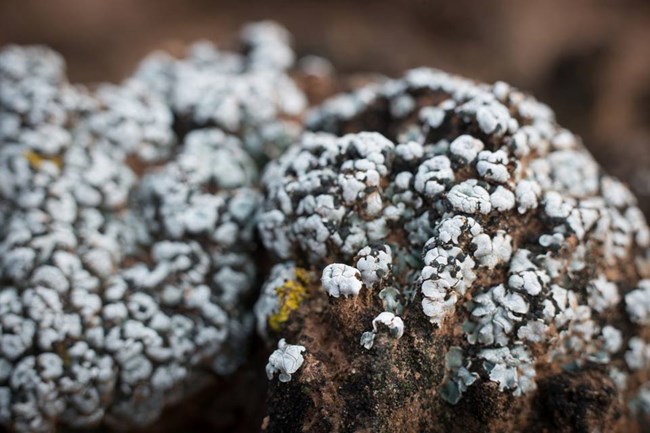Last updated: May 20, 2020
Article
Lichens of Southeast Utah

NPS Photo
Bright colors dot the exposed rock of southeast Utah. These splotches are living species of lichen, often hundreds to thousands of years old. Lichen can live on bare rock, bark, wood, soil, plants, and even animals. Approximately 40,000 species of lichen grow worldwide, from the high deserts of the Colorado Plateau to rainforests and the arctic.
Composition
Lichen is often described as an ecosystem rather than an individual organism, because lichen is actually a partnership of two organisms: fungi and algae (either green algae or cyanobacteria, sometimes both). Lichen is more durable than either fungi or algae alone.
Fungi surround the algae and provide a buffer against weather. Fungi extract nutrients from soil and rock, as well as absorbing water from rain, fog, or dust. Algae make carbohydrates using photosynthesis.

NPS/Neal Herbert
Common Types
Unlike other plants, lichen lacks true roots, leaves, and stems. Instead, lichen has a body called a thallus. These thalli have three common types: flattened crustose lichens, foliose lichens, and fructose lichens.
Flattened crustose lichens are most common and tightly attached to the surface they live in. You cannot remove flattened crustose lichens without destroying them. Over half of all lichen species in southeast Utah are crustose lichens.
Foliose lichens have a leafy body that protrudes from the surface; they look a little like lettuce. About a third of lichen species in southeast Utah are foliose lichens. Fructose lichens are shrubby, with branching bodies or bodies that dangle in long strands. Only four percent of lichens in southeast Utah are fructose lichens.
Surviving in the Desert
Lichen can live for several thousand years, often growing less than a millimeter a year. They can survive the extreme high and low temperatures of southeast Utah. During drought conditions, lichen goes dormant, but quickly springs back to life when water becomes available. Lichen is often seen growing on top of biological soil crust.

NPS/Neal Herbert
Color
Lichen can range in color from black to white, yellow to green to red. Color may be determined by water content, age, sunlight, and the surface the lichen lives on.
Significance
Lichens are an important species in southeast Utah. They help vascular plants grow and provide organic material for soil. Lichens are also a source of food and nesting material for many animals. Scientists monitor the environment using lichens, which are sensitive indicators of air quality and ecosystem continuity.
